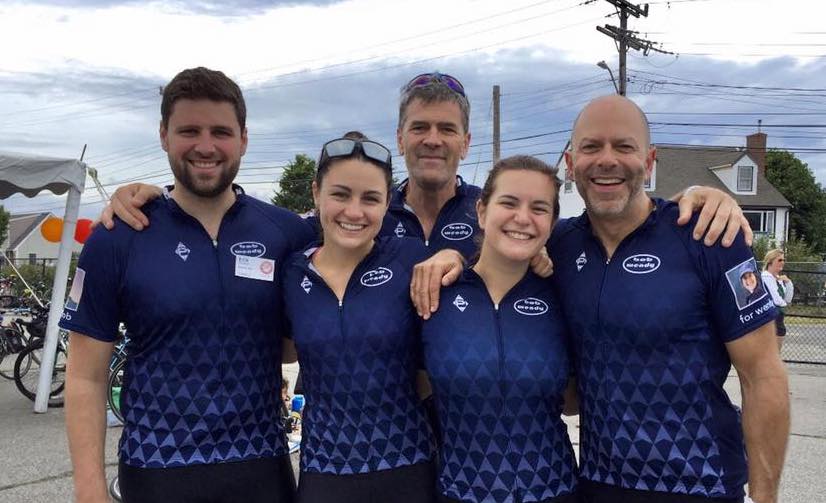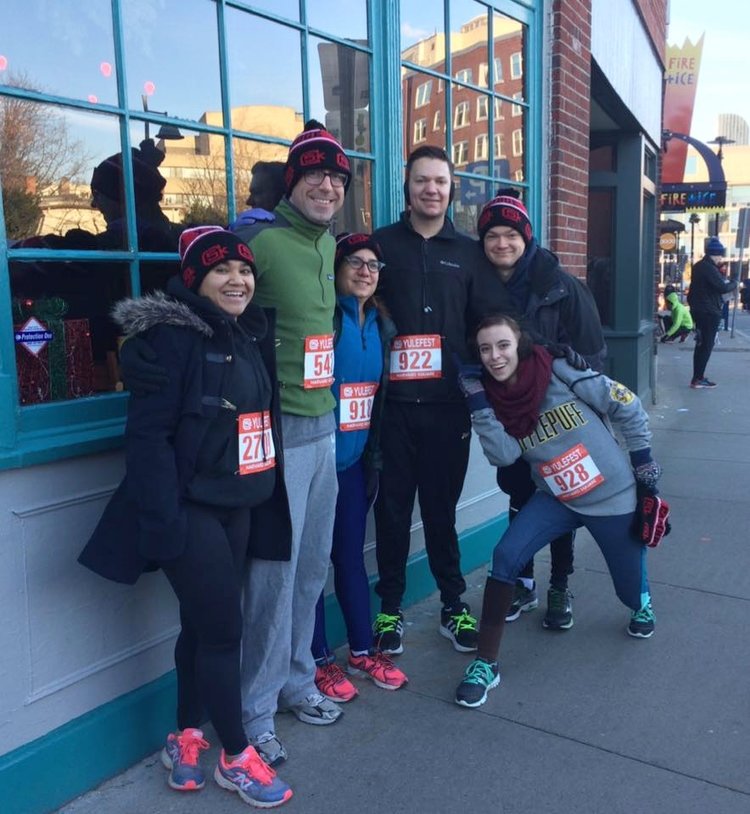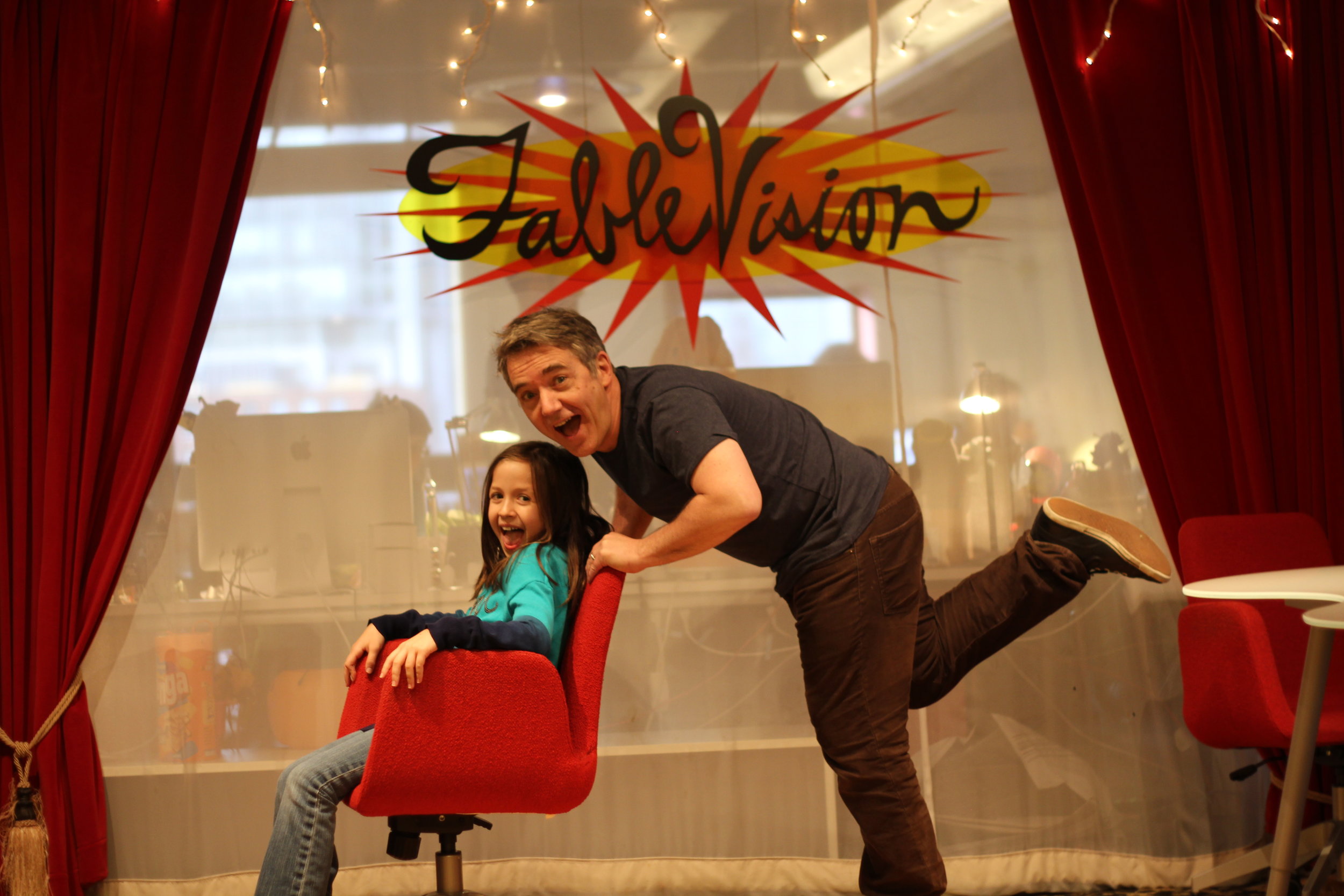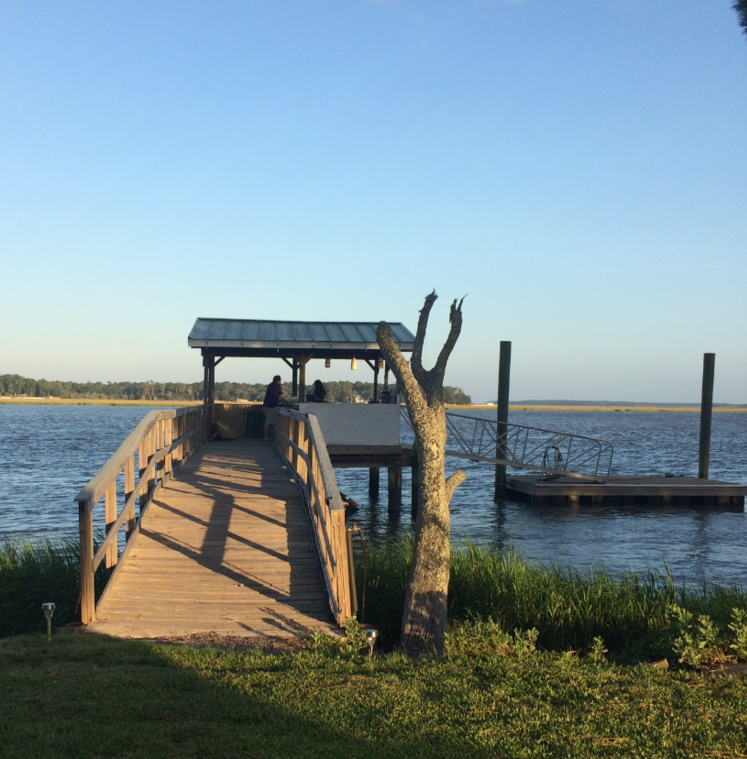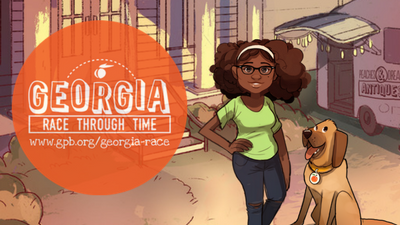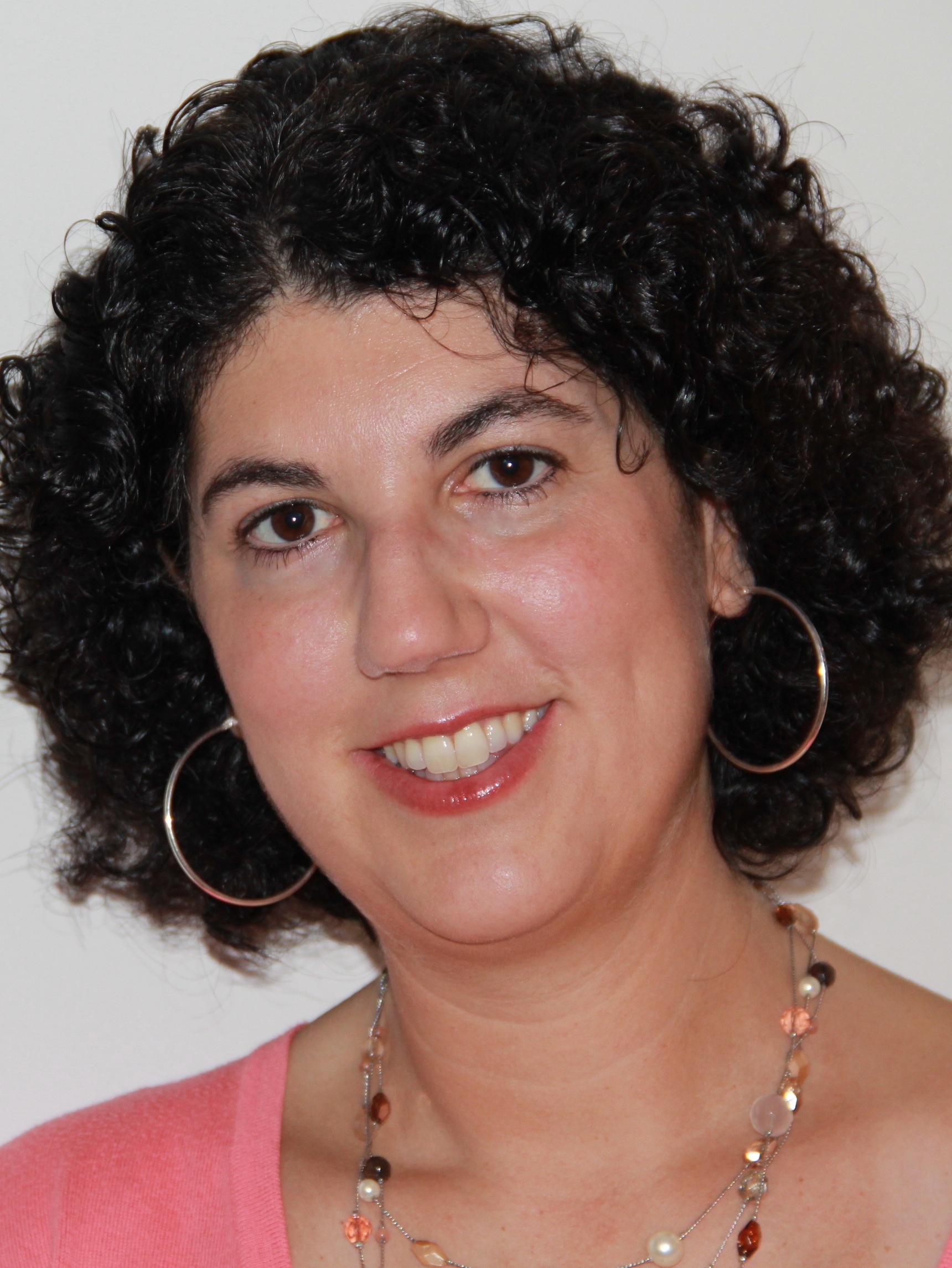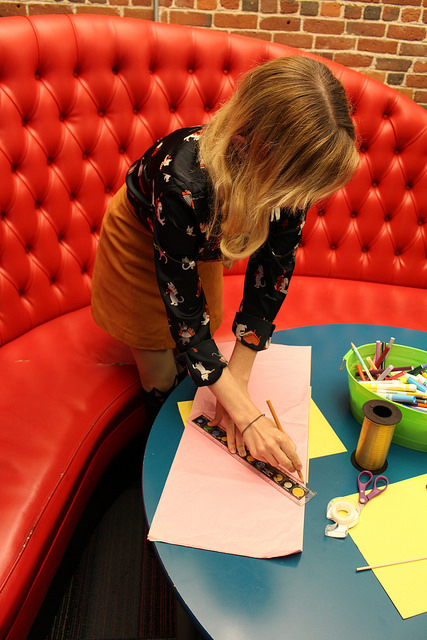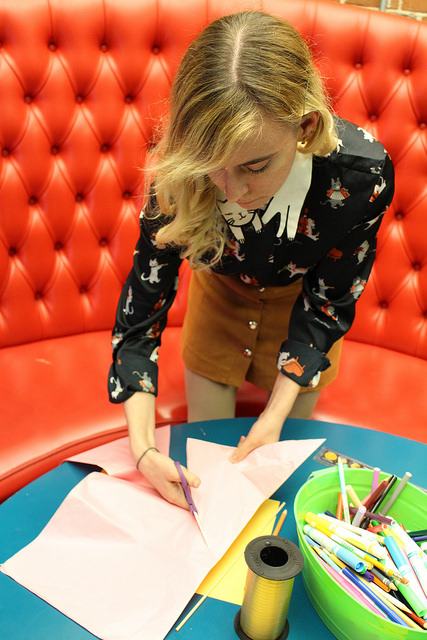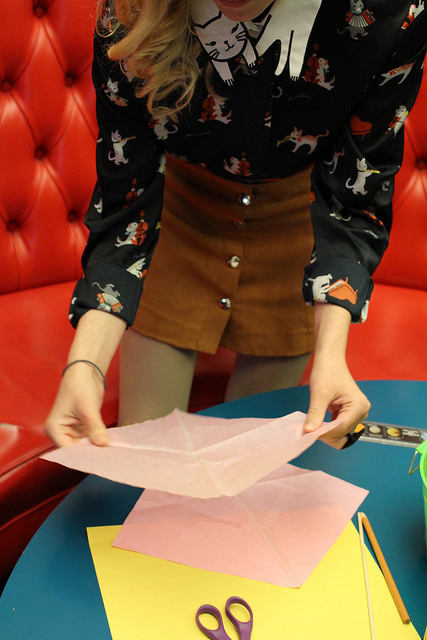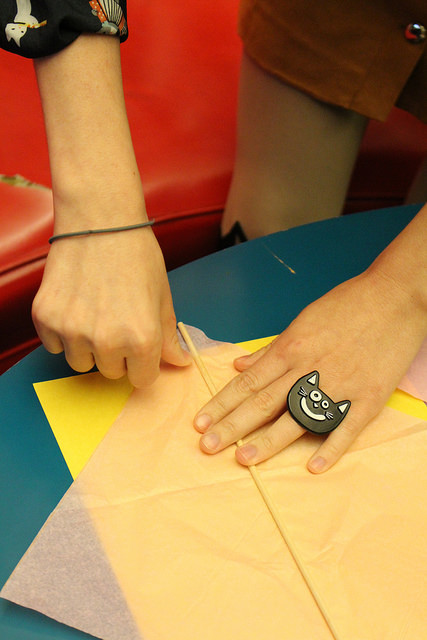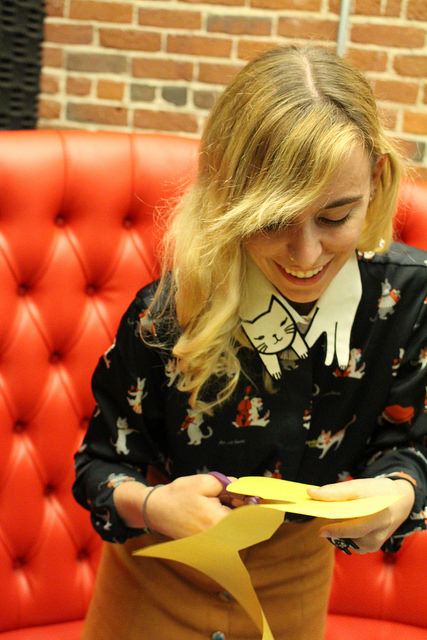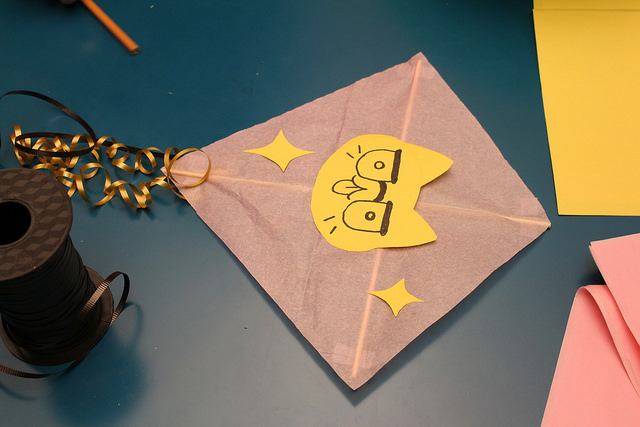FableVision's Mikaela Johnson (right) and her friend and PMC riding teammate Rebecca Epstein (left).
Two weekends ago, I participated in my first-ever Pan-Mass Challenge (PMC). Alongside the incredibly inspiring, resilient group of riders on Team Freeman-Clayton, I rode from Wellesley, MA to Bourne, MA. After hearing amazing stories about the PMC experience from many folks—including FableVision’s Adam Landry (a Pan-Mass veteran of nine years!)—and watching my dad ride with this team for nine years, I decided to join Team Freeman-Clayton in its charge to find a cure.
For 38 years now, the Pan-Mass Challenge has drawn in thousands of cyclists from all over the U.S. and beyond to raise money for The Dana-Farber Cancer Institute. It is a massive fundraising event that, according to its site, “raises more money for charity than any other athletic fundraising event in the country.”
The Pan-Mass Organization prides itself on being more than a cause—it’s a catalyst. I found these words to be true, even before the race had started. At the starting line, all of the cancer survivors riding were asked to raise their hands. An astonishing amount of riders raised their hands high and proud. They were amongst the hundreds of riders who were all working together to make “cancer-free” a reality for everyone, and help survivors maintain their good health. For me, those individuals were my catalyst; this was the humbling moment of realization that this was the reason why I was riding. This was the story that I would hold on to every mile of the way.
Every rider, volunteer, and sideline supporter brings a different story, a different reason for making the trek. Every mile of the ride was fueled by these stories and by kind words of encouragement by the spectators and volunteers. While each story is unique, they’re all based around one common goal—finding a cure. People told their stories through posters, drawings, signs, costumes, and displays of photographs of victims and survivors. Parents and friends of parents of cancer survivors or victims told their child’s story through their helmet decorations. Characters that offered comfort during those difficult times whizzed past me all weekend—Kermit the Frog, toy trucks, origami animals, Thomas the Tank Engine.
My experience reaffirmed the power that storytelling has to connect us and bring us down to earth, to teach and to inspire. I’m fortunate to be a part of a mission-driven community at FableVision, where the work I do revolves around a commitment to making the world a better place through media and storytelling. We’re constantly looking for ways to inspire creativity, foster learning, and most importantly, to motivate positive change in our world.
Though we pride ourselves on the contributions we make in the world of educational media, we also seek out ways to help our community more generally, whether that be running the Cambridge 5K Yulefest for Cambridge Family and Children's Services, partnering with the Make-A-Wish Foundation, busting out the board games for Extra Life, the 24-hour gaming fundraiser for Boston Children’s Hospital (more broadly for the Children’s Miracle Network), or collecting toys and presents as part of the Adopt-A-Family program with The Home For Little Wanderers.
I am so proud to have been able to participate in an event that helps get us so much closer to a cure. It was inspiring how much support and encouragement there was each step of the way, from volunteers passing out food at each stop to the little kids holding up signs and cheering on their front lawns as hundreds of riders zoomed past their houses.
The ride was full of inspiring stories, laughter, gratitude, and memories. Most importantly, the ride was full of life and full of hope. Hope took form in posters, fliers, decorated t-shirts, photographs, the faces of cancer warriors.
I learned about the power of optimism, support, community, and resilience. I learned that every ounce of support makes a difference.
More about Mikaela Johnson, Production Assistant
Born and raised in Needham, MA, Mikaela earned her bachelor’s degree in psychology from Colby College. At Colby, Mikaela was a member of the women’s squash team and worked as a research assistant in the Child Development Lab. While at the Lab, she spent hours in preschool classrooms collecting data for studies pertaining to children’s cognition. Prior to FableVision, Mikaela developed her passion for educational media during her two summers interning at WGBH, first as a radio intern for On Campus and then as a production assistant for High School Quiz Show. Read more about Mikaela.




